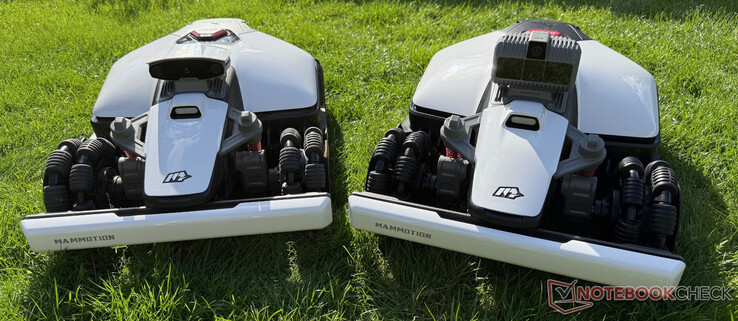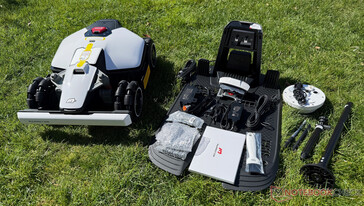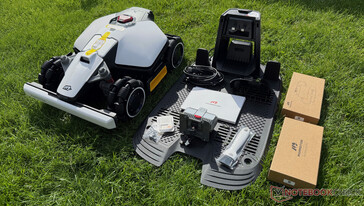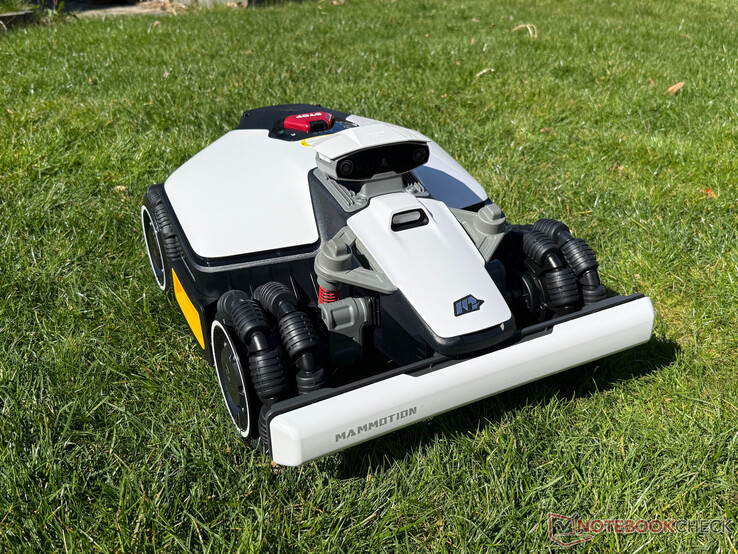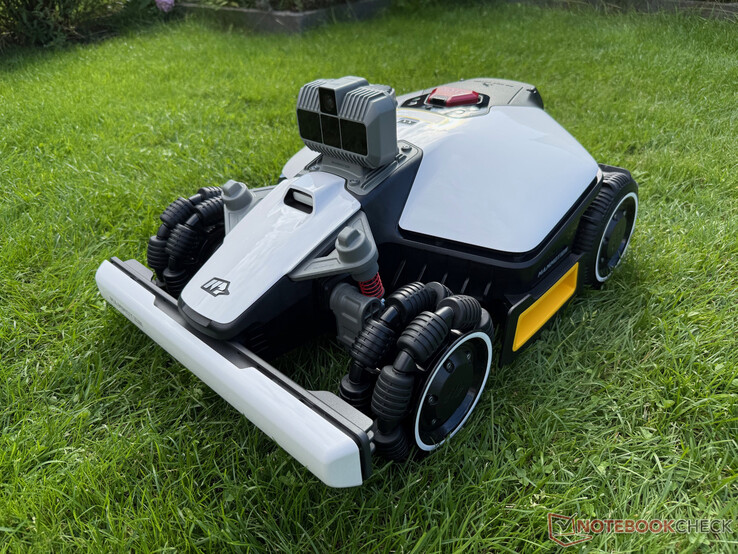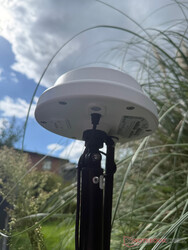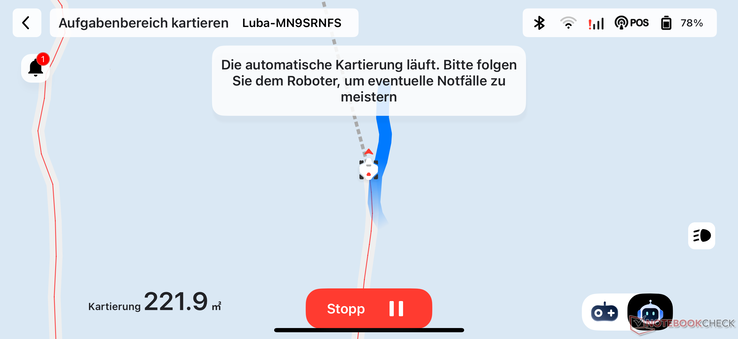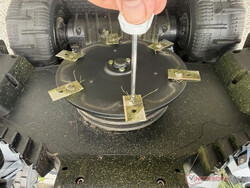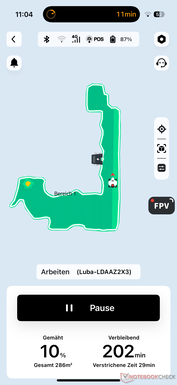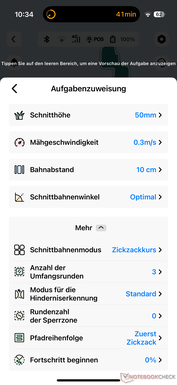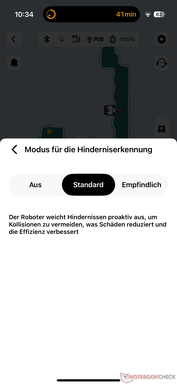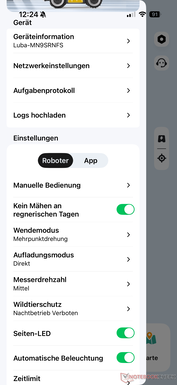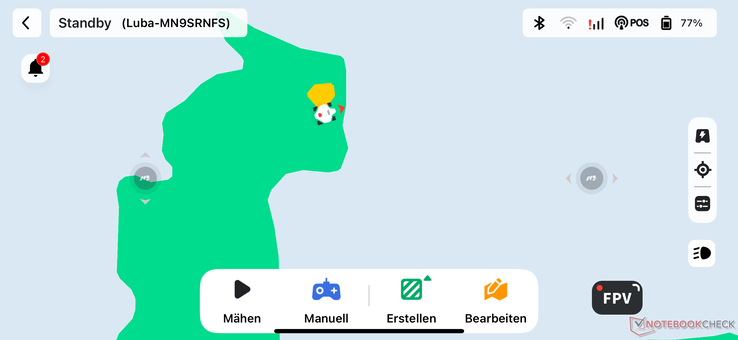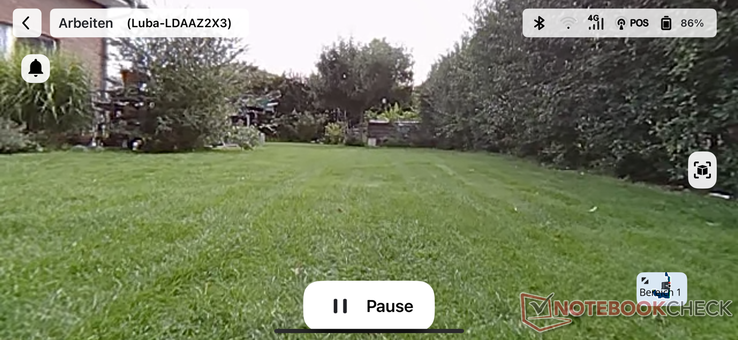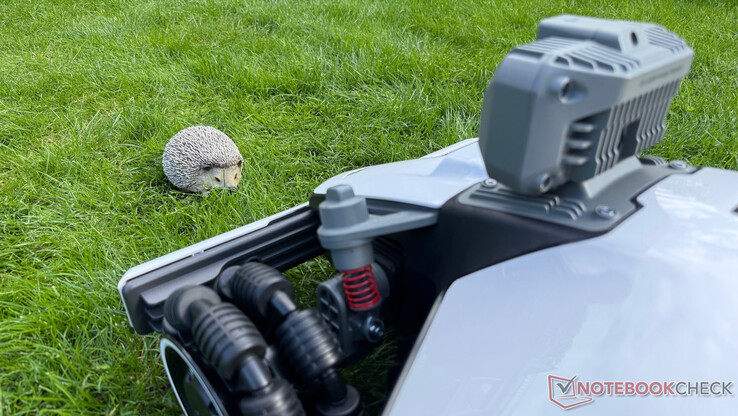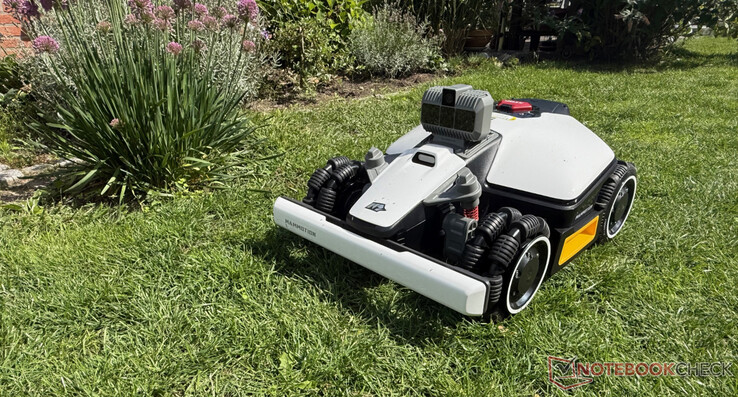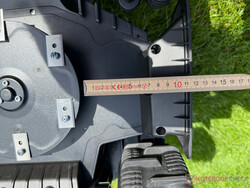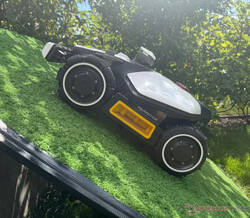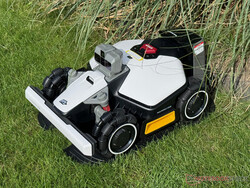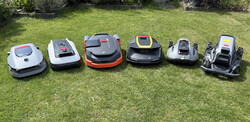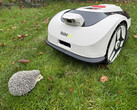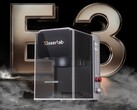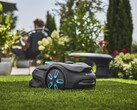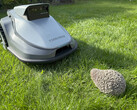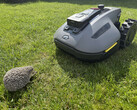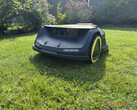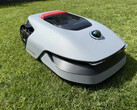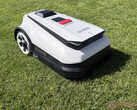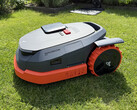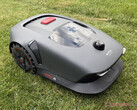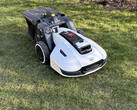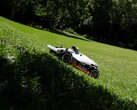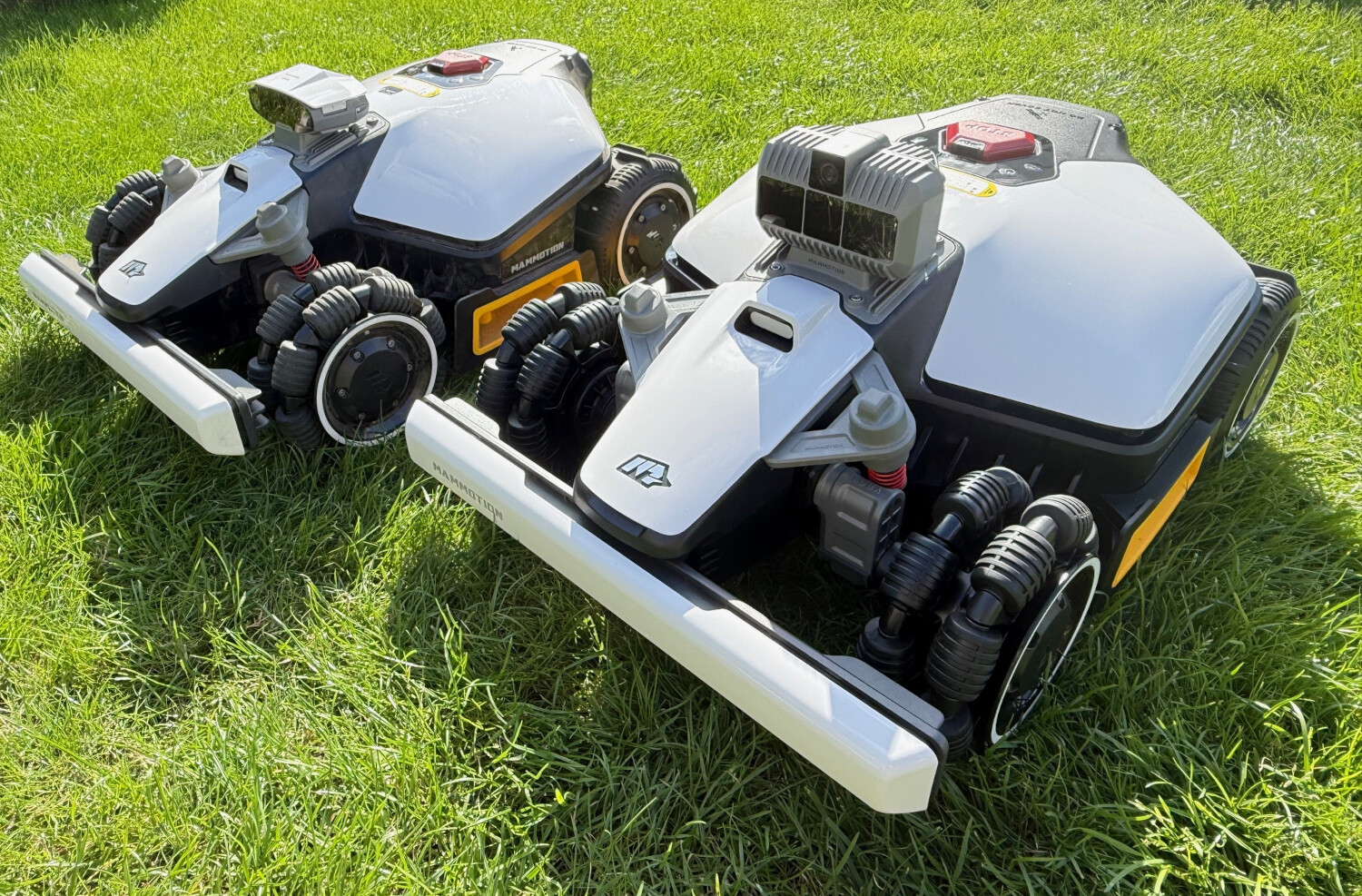
Robot lawnmower with RTK or laser - which is better? Mammotion Luba Mini AWD (LiDAR) review & comparison
One robotic lawnmower, many possibilities.
Mammotion offers its Luba Mini AWD wireless robotic lawnmower in two versions. While the Luba Mini AWD relies (not only) on RTK, the brand new Luba Mini AWD LiDAR navigates by laser. But which is better? Our review and comparison clarifies which Luba Mini is suitable for whom.Marcus Schwarten 👁 (translated by DeepL / Marcus Schwarten) Published 🇩🇪 🇫🇷 ...
Mammotion Luba Mini AWD (LiDAR) test conclusion: One robotic lawnmower, many possibilities
The Mammotion Luba Mini AWD (LiDAR) is one of the more expensive models for areas up to 1,500 square meters, costing at least 1,999 euros according to the RRP. The difference is even more extreme with the Luba Mini AWD 800, which is significantly more expensive for a robotic lawnmower for small areas up to 800 square meters at 1,599 euros RRP than, for example, the Yuka Mini 800.
However, the Luba Mini AWD offers an all-wheel drive system, with which it mastered impressive inclines in the test. It is therefore an interesting alternative, especially for gardens with rather rough terrain - whether due to slopes or other challenges.
When mowing, both models do an excellent job, navigating reliably and systematically. Obstacle detection also worked (almost) perfectly. There is also an extensive app with numerous setting options.
And now to the differences: The classic Mammotion Luba Mini AWD with RTK is suitable for all gardens where there are not too many obstacles such as trees, buildings and more interfering with GPS-RTK system or where there is comprehensive Wi-Fi or 4G coverage for the (not quite as precise and later chargeable) alternative iNavi service (NetRKT).
If this is not the case, then the more expensive Mammotion Luba Mini AWD LiDAR comes into play. It is completely independent of external factors and, thanks to its laser technology, can make its rounds with ease. It is therefore the better choice for properties with lots of trees or other obstacles that interfere with GPS, 4G and Wi-Fi reception.
Pros
Cons
Price and availability
Mammotion offers the Luba Mini AWD in several versions. The Mammotion Luba Mini AWD 800 (S or H Version) is designed for up to 800 square meters of recommended lawn area and costs $1,599 according to the recommended retail price. The Mammotion Luba Mini AWD 1500 for 1,500 square meters is priced at $1,999 RRP.
The LiDAR model is only available as a 1500 version, but unfortunately not currently in the USA. The RRP for the Mammotion Luba Mini AWD LiDAR 1500 in Europe is 2,299 euro. All models are available from Mammotion and Amazon, among others.
Table of Contents
- Mammotion Luba Mini AWD (LiDAR) test conclusion: One robotic lawnmower, many possibilities
- Equipment and scope of delivery: With or without RTK antenna
- Set-up and maintenance: LiDAR model ready for use even faster
- App and operation: Comprehensive app
- Navigation and obstacle detection: only minor differences
- Mowing performance and edge cutting: Good, but not right to the edge
- Running time and volume: LiDAR requires more energy when mowing
At the beginning of the year mammotion launched the Luba Mini AWD, a compact version of its large Luba 2 AWD. This is based on the well-known RTK navigation system.
At the end of June followed with the Mammotion Luba Mini AWD LiDAR, which relies on completely new approaches (for Mammotion) and navigates purely by laser - without any RTK antenna in the garden.
But what exactly are the differences? And which robotic mower is better suited to which area of application? We have not only subjected the Mammotion Luba Mini AWD 800 and the Mammotion Luba Mini AWD LiDAR 1500 to a detailed test, but also compared the two Robotic mowers without boundary wire with each other.
Data sheet and comparison Mammotion Luba Mini AWD (LiDAR)
| Feature/model | Mammotion Luba Mini AWD 800 / 1500 | Mammotion Luba Mini AWD LiDAR 1500 |
|---|---|---|
 |
 |
|
| Area | 800 / 1,500 m² | 1,500 m² |
| Navigation | RKT/ NetRKT | 3D LiDAR + Vision |
| Obstacle detection | UltraSense AI Vision | 3D LiDAR + Vision |
| Mower | Mowing disk | Mowing disk |
| Number of blades | 6 | 6 |
| Cutting width | 20 cm | 20 cm |
| Cutting height | 20 - 65 mm | 20 - 65 mm |
| Cutting height adjustment | electric | electric |
| Slope | 80% (38.6°) | 80% (38.6°) |
| Display | no | no |
| Battery capacity | 4.5 Ah / 6.1 Ah | 6.1 Ah |
| Weight | 15 kg | 15 kg |
| Dimensions | 58.4 x 43.0 x 28.2 cm | 58.4 x 43.0 x 28.2 cm |
| Water resistance | IPX6 | IPX6 |
| Garage included | no | no |
| Number of blades supplied | 6 + 6 | 6 + 6 |
| Color | White | White |
| RRP | $1,599 Euro / $1,999 | n.a. (2,299 Euro) |
Equipment and scope of delivery: With or without RTK antenna
The Luba Mini AWD relies on an UltraSense AI Vision module, which we already know from the large Luba 2 AWD and which supports the RTK antenna. This, in turn, is also optional here. Alternatively, with iNavi Service (NetRKT) based on Wi-Fi or 4G (free in 2025, then 49.90 euro per year) can also be used to navigate in your own garden without a GPS RTK mast.
The Mammotion Luba Mini AWD LiDAR, on the other hand, does not even come with an RTK antenna. With this brand new model, the manufacturer relies on solid-state LiDAR, which is installed in a robotic lawnmower for the first time. This means that no moving parts are used. According to the manufacturer, the 144-channel LiDAR generates 200,000 point clouds per second and should therefore enable particularly precise positioning, again supported by a camera. We reveal how well this works in this Mammotion Luba Mini AWD LiDAR test below.
Otherwise, both robotic mowers are identical, at least in the respective 1500 version. All models are equipped with a cutting system with a 20 cm cutting width (i.e. no double mower as in the large Luba) and six free-swinging blades, which can be electrically adjusted to a cutting height of between 20 and 65 mm. Other features include all-wheel drive with physical shock absorbers, a replaceable 6,1 Ah battery and LED lights. In addition to Bluetooth and Wi-Fi, 4G is also available as an option for connectivity.
Set-up and maintenance: LiDAR model ready for use even faster
Once the camera or LiDAR module has been screwed onto the top of the Luba Mini AWD and the charging station - as well as the RTK station for the classic model - has been installed and connected, it is time to set up via the Mammotion app for Android or iOS. The procedure is the same for both models.
Once the app and device are connected, which worked smoothly in both cases in our Mammotion Luba Mini test, the next step is to create the virtual map of your own garden. In addition to manual control via two virtual joysticks for forward/backward and right/left, there is also an automatic AI mapping option.
In our practical test of the Mammotion Luba Mini AWD (LiDAR), this usually worked well for clearly recognizable transitions between the lawn and the surrounding area (e.g. on a patio or the edge of a flower bed). We did not notice any major differences between the two models. However, manual mapping (with a little skill and practice) is ultimately even more accurate, as it can be controlled quite sensitively.
Mammotion includes a screwdriver with its Luba Mini. This can be used not only to mount the module on the top, but also to change the six blades on the underside. Thanks to IPX6, it can be cleaned with a garden hose.
One negative aspect we noticed in the test was that the Luba Mini AWD with RTK in particular became very dirty and was covered in a thick layer of dust after just a short time. Whether this is due to an electrostatic charge or other reasons cannot really be determined.
App and operation: Comprehensive app
In addition to a control unit for basic functions, the robotic lawnmowers are primarily controlled via the Mammotion app. Overall, this is one of the best on the robotic lawnmower market. It offers numerous settings and options and is quite intuitive to use (apart from a rather lengthy menu).
Especially when mowing, it offers many options for adapting to your own wishes and circumstances. While the cutting height can be adjusted electrically in 5 mm increments between 20 and 65 mm, the mowing speed (0.2 to 0.6 m/s), the path distance (8 to 14 cm) and the cutting path angle (optimum, user-defined, random) can also be set.
Under "More", various cutting path modes, the number of circumferential laps, the obstacle detection mode (Off, Standard, Sensitive), the number of laps in restricted zones and the path sequence can also be adjusted. However, we missed an option to deactivate obstacle avoidance when mowing the edges. More on this below.
Not only can several zones (max. 20), no-go zones and connections (channel) be created in the map management, but also your own patterns for the lawn design. In addition to automatic planning for set mowing times, there is also a live video function that allows you to access the robot lawn mower's camera in real time after approval.
Navigation and obstacle detection: only minor differences
Now we come to the big difference between the Mammotion Luba Mini AWD with RTK and LiDAR: the navigation. The classic model, which is a few months older, usually has an RTK station in the garden for this purpose, which is relatively compact at a good 70 cm high. This supports GPS for more precise positioning in the garden. Alternatively, the iNavi service (NetRKT) can be used, but this will be subject to a charge from 2026, at least when using 4G instead of Wi-Fi.
In RTK use, the Luba Mini AWD did not have any noticeable weaknesses in navigation. It reliably and for the most part systematically covered our two test areas, although there are admittedly few challenges for comprehensive GPS RTK reception here.
We can also attest the same attributes to our LiDAR model. Here, too, there is no reason for criticism. The Luba Mini AWD LiDAR also reliably made its way along the tracks. At one point or another, one or other model may be a little less accurate than its colleague. However, in an environment such as a garden, deviations in the millimeter range are not necessarily important.
On the other hand, we identified minor differences in obstacle detection during the test. Here, the LiDAR model scored full marks and detected and avoided all the standard test obstacles we used with flying colors - including our hedgehog dummy. The RTK model, on the other hand, failed to detect the biggest challenge, a piece of garden hose lying on the lawn, on every attempt. Our impressions are that the obstacle detection in the Mammotion Luba Mini AWD LiDAR works even better.
Mowing performance and edge cutting: Good, but not right to the edge
In practice, there are no differences in mowing performance. This is hardly surprising, as both navigate reliably across the lawn and mow with the same powerful 88 W mower with six blades. The cutting pattern itself is nice, although the thick rear wheels leave clearly visible tracks in the lawn. Thanks to the special front wheels and a special turning maneuver that can be set in the app, it is nevertheless gentle on the lawn - as long as it doesn't get stuck somewhere.
Even the Luba Mini AWD cannot solve the usual problems when mowing in corners and on edges that are not at ground level. Both variants navigate quite cleanly and closely along the map boundary, whereby the number of edge laps can be set via the app.
However, the 200 mm wide mower deck sits in the usual manner in the middle under the approximately 43 cm wide robotic lawnmower. This means that even with perfect navigation, a good 11 cm of edge is automatically left if the robotic lawnmower cannot drive over a level lawn edge due to the surroundings.
Secondly, there is unfortunately no option in the app for the Mammotion Luba to separately deactivate obstacle detection for edge cutting. This means that it is either completely deactivated for the area or activated. If you opt for the second option, you will have to live with the fact that the robotic lawnmower will recognize plants hanging into the lawn from adjacent beds as obstacles and will go around them.
If the option to deactivate obstacle avoidance were available here, it could plow along the edge of the lawn if desired, leaving less unmown grass behind.
One of the strengths of the Luba Mini AWD is the four-wheel drive already included in its name. This means that all four wheels are driven, allowing the robot mower to climb inclines of up to 80 percent or 38.6 degrees, according to the manufacturer. It didn't quite manage this on our test ramp with artificial turf. However, the Mammotion Luba AWD (LiDAR) climbed up to a remarkable 65 percent incline in the test, which is a top value. The Mammotion Luba Mini AWD also performed well in tight spaces, even slightly better than the LiDAR alternative.
Running time and volume: LiDAR requires more energy when mowing
In terms of running time and energy consumption, the comparison is a little off, as we tested the smaller model of the Luba Mini AWD with RTK for up to 800 square meters, but the LiDAR alternative is only available as a large 1500-meter version. Nevertheless, a look at the figures is interesting and provides an exciting assessment of the two robotic mowers, which work quite quietly in practice.
In our test, the Mammotion Luba Mini AWD 800 mowed around 160 square meters per battery charge in just over two hours with standard settings. It then disappeared for a pit stop at the charging station for just under two and a half hours with 15 percent charge remaining. During this time, approx. 130 Wh with up to 63 W flowed into the 4.5 Ah battery.
The Luba Mini AWD LiDAR 1500 is equipped with a 6.1 Ah battery. In the test, it mowed around 185 square meters in just under three hours and then recharged a good 180 Wh with up to 90 W in less than 2.5 hours. The energy consumption of this navigation technology is higher than with RTK, which is also noticeable in the warm temperature of the LiDAR module.
For the comparability of all our robotic lawnmower tests, we also assume a theoretical scenario in which 500 square meters of lawn are to be mowed three times a week. In this setting, the power consumption of the Luba Mini AWD with RTK technology adds up to approx. 17.5 kWh per month. The LiDAR alternative is slightly lower at approx. 16.5 kWh. Overall, both are not particularly economical due to their relatively high standby consumption of 24 W (RTK) and 19 W (LiDAR).
Is the Mammotion Luba Mini AWD (LiDAR) not the right robotic lawnmower without wire for your own garden according to our test?
Then here are many more models in our list of the best robotic lawnmower 2025!
Transparency
The selection of devices to be reviewed is made by our editorial team. The test sample was given to the author by the manufacturer free of charge for the purposes of review. There was no third-party influence on this review, nor did the manufacturer receive a copy of this review before publication. There was no obligation to publish this review. As an independent media company, Notebookcheck is not subjected to the authority of manufacturers, retailers or publishers.




